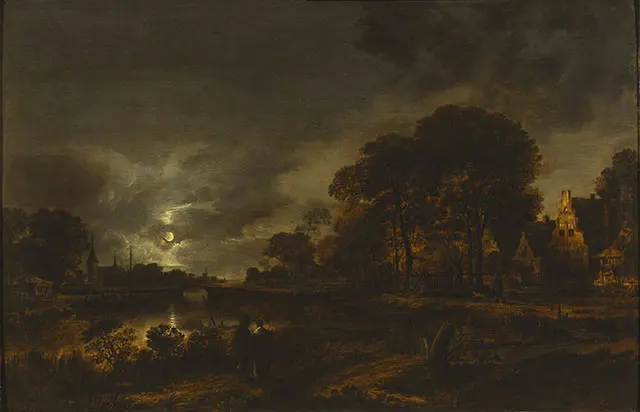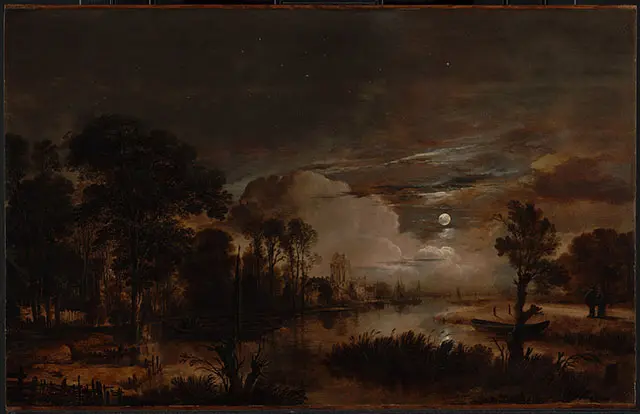Painting Nocturnes in Oil. One of my favorite genres of landscape painting is the Nocturne. Much like walking out into the night, attempting to paint nocturnes in oil is like entering a different realm where you will be tested. You need to let go and trust your skills. Be confident in the painting process and exercise some restraint.
Choice of Palette
Color choice is paramount in these types of paintings. An odd color or a selection that is “not quite right” will be amplified by the dark neutral tones elsewhere. Think of a musical scale where an off-note is apparent to listeners. This isn’t Jazz – this is precision expression of your vision. I would encourage layers of subtlety and resisting the temptation to drop in bright highlights too soon, as exhilarating as that feels. Create a hierarchy of darkest to lightest in your color values and stick to it throughout the painting. A limited palette is probably wise too, at least when you are starting out – get control of your tonal values without too many choices distracting you.
Aert van der Neer
I’ve stumbled across Aert van der Neer paintings on blogs and social posts over the years and I’m drawn to them. I love controlled fluidity in painting and his are mostly painted on wood panel. Hard surfaces such as wood lend themselves to that style of painting, especially if there is a level of detailed intricacy. You are not wrestling with a forgiving and toothed surface such as canvas, but rather an unforgiving wall. The focus resides on a truly two-dimensional surface.

The subject matter of these paintings is the surrounding atmosphere as much as it is the actual scenery. The single source of light, surrounded by swirling natural forms. These works are the ideal place where drawing and painting collide, A place where an artist’s signature style reveals itself. Creative use of water features such as rivers and man-made structures help to reflect the moonlight and slowly draw the viewer in. With the passage of light, details are revealed and the artist ramps up the saturation slightly with the introduction of warmer tints of color. Like the best landscapes, his paintings are a nexus of abstract forms and detail that shine with clarity. Aert van der Neer’s paintings are a masterclass in composition.
Painting Nocturnes in Oil
Mix your own blacks. Experiment with mixing your own dark colors. A consistent black that will give you interesting results with depth (not attainable by just using a straight black such as Ivory – unless you are experimenting with the Zorn palette) is achieved by mixing in equal parts the following four colors: Ultramarine Blue, Viridian Green, Alizarin Crimson and Raw Umber. Essentially you are taking rich, dark versions of primary colors and neutralizing them against each other.
There are a number of key artists who practiced painting nocturnes in oil, Whistler being another prime example. I will revisit this topic with them in mind in subsequent posts.
